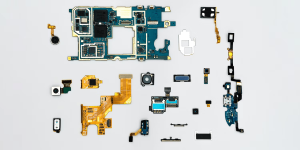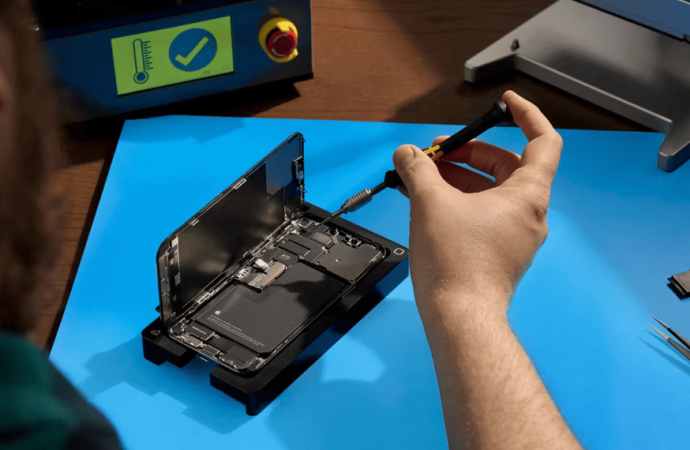Easily Replaceable Smartphone The European Union’s recent decision to require Smartphones with easily replaceable batteries is set to revolutionize the tech industry. This move comes as a part of the EU’s commitment to a circular economy and reducing electronic waste. However, this shift towards user-friendly designs will undoubtedly reshape the landscape of smartphone manufacturing and
Easily Replaceable Smartphone
The European Union’s recent decision to require Smartphones with easily replaceable batteries is set to revolutionize the tech industry. This move comes as a part of the EU’s commitment to a circular economy and reducing electronic waste. However, this shift towards user-friendly designs will undoubtedly reshape the landscape of smartphone manufacturing and usage.

Image by https://www.makeuseof.com/
Why the EU Enforces Easily Replaceable Smartphone Batteries
At the heart of this regulation lies a fundamental shift in design philosophy. Currently, many premium smartphones feature integrated, non-replaceable batteries, enhancing waterproofing and overall durability. While this design offers benefits in terms of device longevity and resilience, it poses challenges when battery-related issues arise.
Replacing an integrated battery can be a complex task, often requiring specialized tools and a trip to a repair shop. Unauthorized repairs can even void warranties or result in post-repair lockouts, as seen in Apple’s case. The new EU directive aims to address this issue while promoting a more sustainable approach to battery consumption.

Image by https://www.makeuseof.com/
The EU’s Circular Economy Approach to Batteries
The EU’s regulation aligns with its commitment to a circular economy by governing the entire lifecycle of batteries. The goal is to minimize electronic waste and encourage responsible material recovery. Key components of this directive include:
- Waste Collection: Producers must collect 63% of portable battery waste by 2027, rising to 73% by 2030.
- Lithium Recovery: Targeting 50% lithium recovery from waste batteries by 2027, increasing to 80% by 2031.
- Recycling Efficiency: Nickel-cadmium batteries should achieve 80% recycling by 2025, while other battery types should hit 50%.
- Minimum Recycled Content: Portable batteries must contain a minimum of recycled materials, including 16% cobalt, 85% lead, 6% lithium, and 6% nickel.
These goals support the larger objective of ensuring that all portable batteries incorporated into appliances become removable and replaceable by the end-user by 2027.

Image by https://www.makeuseof.com/
Impact on Smartphone Manufacturers
Enforcing replaceable batteries is poised to trigger significant changes in smartphone design. The drive for sleeker, more compact devices with integrated batteries will give way to adaptable designs that prioritize user accessibility. Manufacturers like Apple, Google, and Samsung must adapt to this shift, altering their production processes and designs.

Image by https://www.makeuseof.com/
The 2027 timeline allows manufacturers to make necessary adjustments to accommodate these changes. While the regulation applies to the EU, its influence will likely extend globally, as seen with previous consumer-focused EU laws.

Image by https://www.makeuseof.com/
However, this transition could spell the end of the era of mirror-like glass-slab smartphones. The slimline, fully-integrated batteries that define these designs might have to give way to new forms. Additionally, the shift could impact waterproofing techniques, which currently rely on integrated batteries for device sealing.

Image by https://www.makeuseof.com/
Embracing Change for a Greener Future
The move towards easily replaceable smartphone batteries signifies a broader commitment to environmental sustainability. While the days of effortlessly swapping phone batteries are fading, this change aligns with the need to reduce e-waste and ecological impact. Smartphone designers now have a grace period to adapt their creations and designs, ensuring both usability and eco-friendliness.
In conclusion, the EU’s push for replaceable batteries is set to redefine smartphone technology. The regulation not only changes how we interact with our devices but also contributes to a more sustainable and responsible electronic landscape. While challenges lie ahead, the future holds promise for both innovation and environmental preservation.






















Leave a Comment
Your email address will not be published. Required fields are marked with *